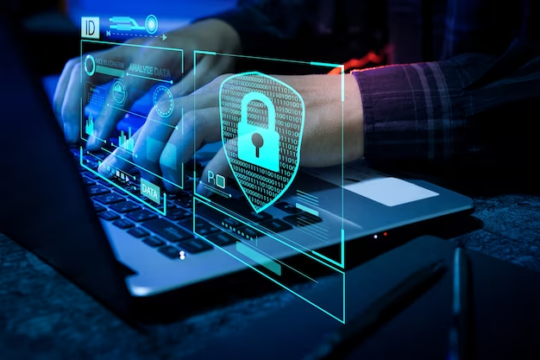Cybersecurity and cybercrime are two prominent areas marketers and businesses commonly pay much attention to nowadays. Though these are ordinary subjects in the commercial setup, there are many prevalent cybersecurity myths and misconceptions among the public that need to be overlooked today.
Data states that over 2200 cyberattacks occur every day around the globe. Many stay unnoticed during the execution period. A major reason for this increased number is the misconceptions about such threats. To sustain robust cybersecurity measures, it is essential to concrete the basics of cybersecurity and let go of the dominant myths related to it.
Cybersecurity Myths to Ignore in 2024:
Myth 1: Only higher authorities and personalities of an organization are targeted by cybercriminals.
Reality: Criminals always look for easy targets, and lower-level workers of companies have easy-to-break security technologies in their systems. Therefore, anyone can be targeted irrespective of their positions and responsibilities.
Myth 2: Identifying phishing and fraud emails or messages is easy.
Reality: Alongside advancements in cybersecurity, the criminals breaching it have also progressed. So, identifying their approaches can be problematic at times. The criminals follow standard procedures to break into their targets’ systems. Their emails may seem very professional from trustworthy sources, seeing which people often end up trusting them and sharing confidential information that leads to an unwanted situation. Therefore, having the misconception about recognizing phishing emails easily can be dangerous for organizations.
Myth 3: Strong passwords and keys are sufficient for rigorous cybersecurity.
Reality: One of the prevailing cybersecurity myths is that only passwords and encryption keys can restrict cybercrimes. However, passwords and keys can easily be extracted by hacking a system or network. For this purpose, multi-factor authentication, which offers an extra layer of protection to user data, is necessary.
Myth 4: Cybersecurity is only a concern of an organization's IT team.
Reality: Cybersecurity is the responsibility of everyone working in a company. It can happen to anybody at any time without prior notice. Moreover, the IT team cannot always be available to identify threatening emails for each employee. Therefore, all the employees should receive training on the same to strengthen cybersecurity in the company.
Myth 5: An organization cannot be the prey of cybercrime more than once.
Reality: One of the common cybersecurity myths is that companies often assume that their organizations cannot be attacked more than once. However, the risk of attacks stays the same even after bearing once. Data breachers always look for a time when their targets are at their weakest, and going through an incident of cybercrime makes organizations weaker internally and externally. Therefore, a company can be attacked multiple times without any warning.
Myth 6: Cybersecurity is only required for external threats.
Reality: The causes for cybercrime can be diverse and not only external factors. Human error can occur at any time, leading to network weaknesses and cyber-attacks. Cybersecurity breachers look for occasions when their targets make mistakes, and they can take advantage of it. Moreover, allowing all employees access to confidential data can be risky for organizations as they can easily steal it and sell it to third parties for unethical purposes. Hence, cybercrime can occur for both external and internal reasons.
Myth 7: Cybersecurity is only required for bigger companies.
Reality: Among all the cybersecurity myths and misconceptions, this one suggests that cybercrimes are not only executed for financial advantages but can also be for other personal or external motives. Attackers target people and organizations with vulnerabilities through the internet. Minimal chances of weaknesses can result in diverse ways. Therefore, companies of all sizes should solidify their security measures.
Why is it Important to Ignore Cybersecurity Myths and Misconceptions?
Companies often commit errors in formulating their cybersecurity regulations due to following the myths about cybersecurity. This ultimately adds to the failure of the companies to establish vigorous safety barriers to protect organizational data from undesirable threats. Ignoring cybersecurity myths will not only help companies measure their security endeavors but also gain actual knowledge on the subject. Also, it will help impart insights into cybercrimes so that everyone in a company stays aware of its common practices.
Concluding Remarks!
Relying on the prevalent cybersecurity myths can impact companies in negative ways. Attaining and imparting actual knowledge on cybercrimes will be advantageous for them to prevent such attacks. Furthermore, cybersecurity is a continuous process. With new methods and technologies of attacks, advancements should also be made in safety activities to stay a step ahead of the criminals. Therefore, knowing cybersecurity facts is more important than trusting misbeliefs. Go through our blog section to enhance your understanding of different marketing strategies.
Also Read : 7 Best Cybersecurity Tools to Protect Your Organization’s Data





